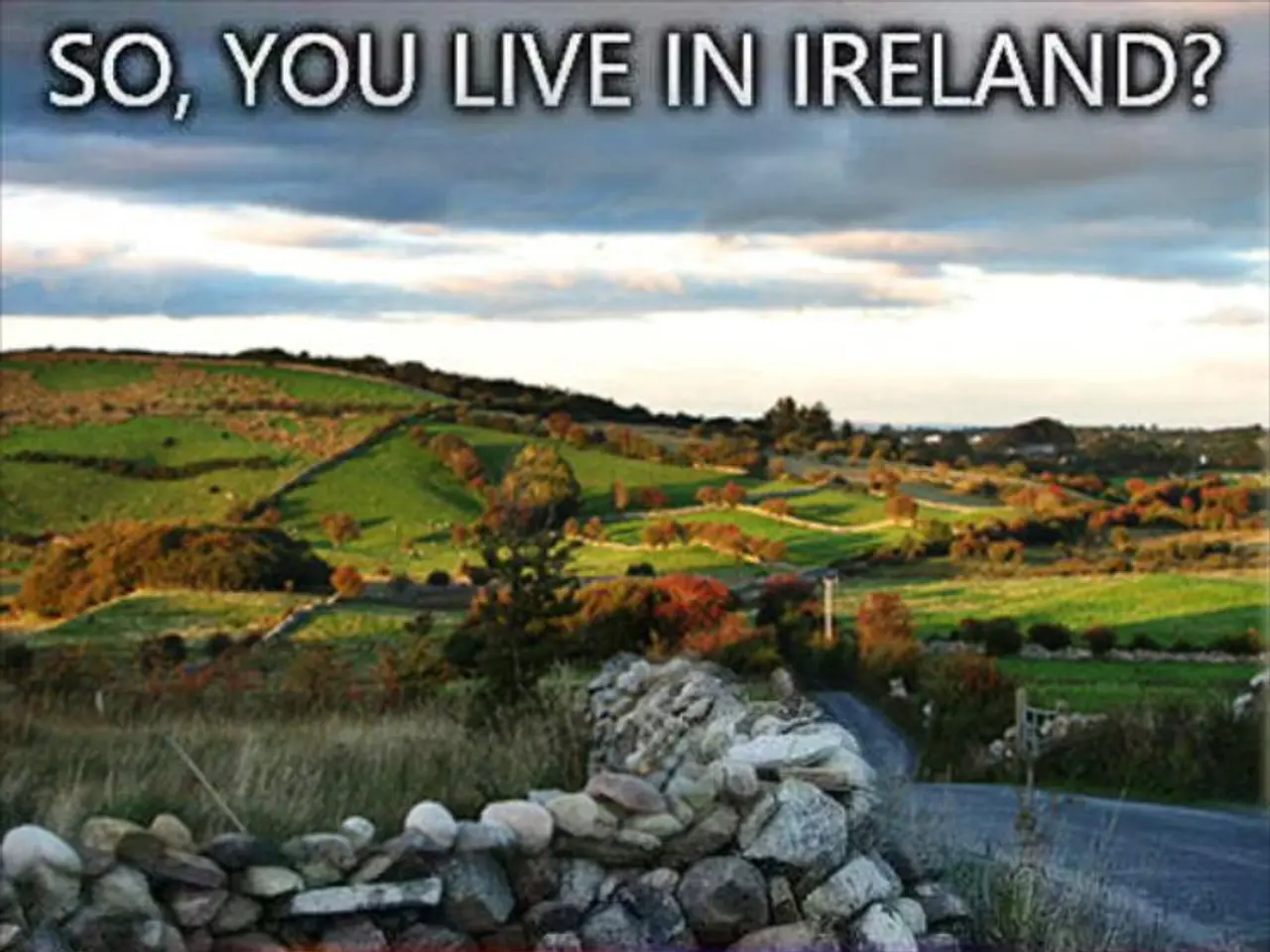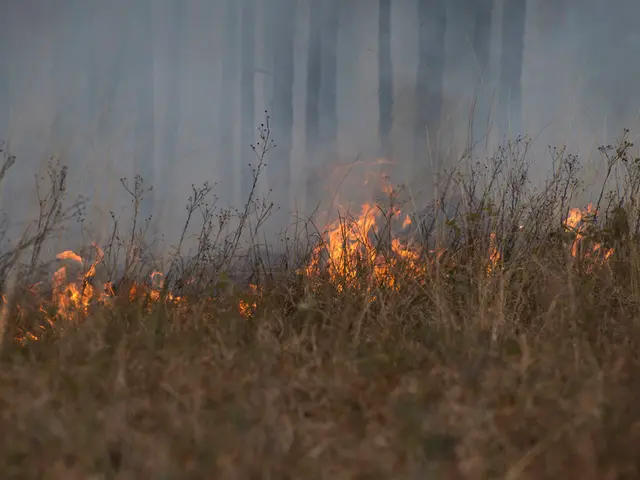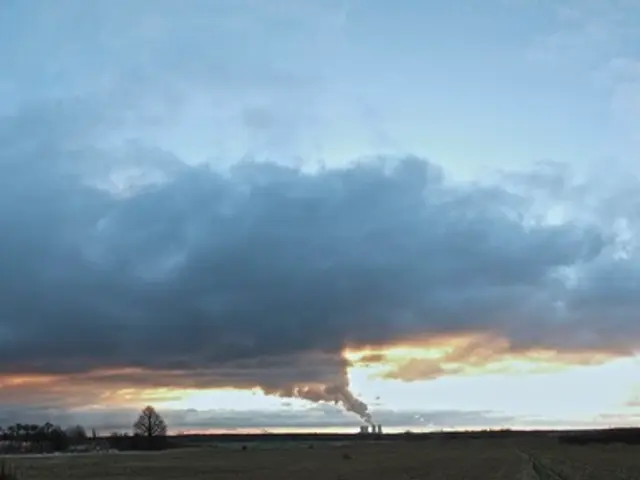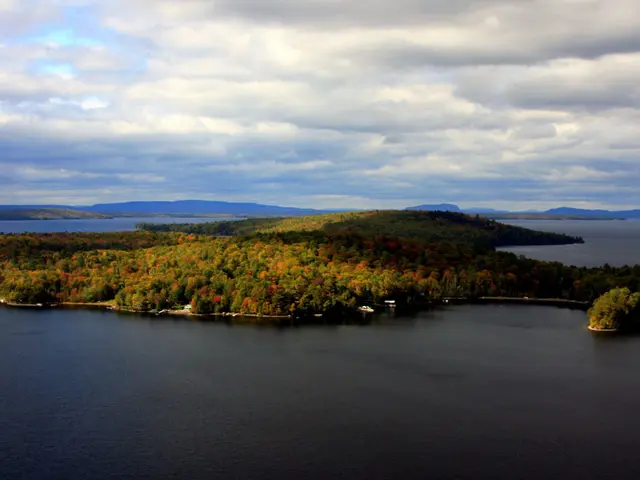Emergency evacuations instituted due to the rapid advancement of a wildfire threatening Newfoundland's major urban center.
The wildfire that erupted near Paddy's Pond, St. John's, Newfoundland and Labrador, continues to be held in check with near containment and no overnight growth reported. The fire, which started around August 11, 2025, has not resulted in any significant spread, according to the latest updates from August 17, 2025[1].
The firefighting efforts involve 127 volunteer firefighters, the St. John's Regional Fire Department (SJRFD), and neighbouring volunteer fire departments. Ground crews are actively working on containment and hot spot suppression, with no air tanker support required at present[1].
The cause of the Paddy’s Pond wildfire has not been explicitly stated in the available updates, leaving it unspecified.
In terms of size, the Paddy's Pond fire is smaller and localized within the City of St. John’s jurisdiction. Other major fires in Newfoundland and Labrador, such as the Kingston fire and Martin Lake fire, range from over 1,700 to nearly 11,000 hectares[2][3].
The current status of the Paddy’s Pond wildfire is stable containment with ongoing ground efforts and no active growth overnight. Firefighters continue to monitor and suppress hotspots, supported by substantial volunteer and professional firefighting crews[1]. Residents in St. John's and surrounding areas are advised to monitor official channels for updates.
Elsewhere in Newfoundland and Labrador, a wildfire north of Kingston covers 52 square kilometers, while another fire near Irishtown, north of Moncton, has burned less than a square kilometer[4].
In New Brunswick, two out-of-control wildfires are burning, with 14 air tankers and three helicopters part of the firefighting effort. Despite parched conditions, there have been no evacuations and no homes or structures lost[5].
Across Atlantic Canada, 56% of the region is classified as abnormally dry, with 90% of Nova Scotia in a moderate drought. Halifax, Nova Scotia, has received about 40% of its usual rainfall between April and July, while St. John's, Newfoundland and Labrador, has received only a third of its usual rainfall during the same period[6].
In response to the wildfires and drought conditions, a state of emergency has been declared in Paradise, Conception Bay South, Galway, and Southlands, with approximately 3,000 people in the area having been forced from their homes[7]. Five firefighters from P.E.I. and five from Maine have arrived to help, with another 20 expected from Nova Scotia[7].
Summary Table:
| Aspect | Details | |---------------------|---------------------------------------| | Location | Paddy’s Pond area, City of St. John's | | Size | Not quantified; described as contained with no growth recently | | Cause | Not stated in available sources | | Status (as of Aug 17, 2025) | Classified as "Being Held," near containment, no overnight growth | | Firefighting efforts| 127+ volunteer firefighters + SJRFD + local departments; ground crews working; no air tanker support currently | | Affected Areas | Paradise, Conception Bay South, Galway, and Southlands (state of emergency declared) | | Additional Resources | Firefighters from P.E.I., Maine, and Nova Scotia |
This information is based on official updates from the City of St. John's emergency alerts and Newfoundland government wildfire advisories[1][3][7].
[1] City of St. John's Emergency Alerts: https://www.stjohns.ca/city-hall/emergency-management/emergency-alerts [2] Newfoundland and Labrador Wildfire Management: https://www.wildfire.gov.nl.ca/ [3] Government of Newfoundland and Labrador: https://www.gov.nl.ca/ [4] CBC News: https://www.cbc.ca/news/canada/new-brunswick/new-brunswick-wildfires-update-august-17-2025-1.6108759 [5] The Telegram: https://www.thetelegram.com/local/newfoundland-labrador/five-wildfires-burning-out-of-control-in-newfoundland-labrador-329676/ [6] Agriculture Canada: https://www.agr.gc.ca/eng/daily-agricultural-weather-outlooks/ [7] CBC News: https://www.cbc.ca/news/canada/newfoundland-labrador/wildfire-st-johns-paradise-evacuation-1.6108793
- The environmental science community is closely monitoring the Paddy's Pond wildfire in St. John's, Newfoundland and Labrador, as the state of drought in Atlantic Canada continues to worsen, with 56% of the region classified as abnormally dry and 90% of Nova Scotia in a moderate drought.
- In an interview with general-news channels, meteorologists are expressing concern about the ongoing dry conditions, which may exacerbate wildfire risks, especially in areas already affected by such fires.
- With the lack of significant rainfall between April and July in St. John's, Newfoundland and Labrador, environmental scientists argue that this could have long-term effects on the local ecosystem, potentially leading to erosion, loss of biodiversity, and changes in weather patterns.
- As wildfire experts investigate the cause of the Paddy's Pond wildfire, researchers in environmental-science are calling for climate change to be a central consideration in their investigations, as human-induced climate change is expected to increase drought frequency and intensity in the region.








